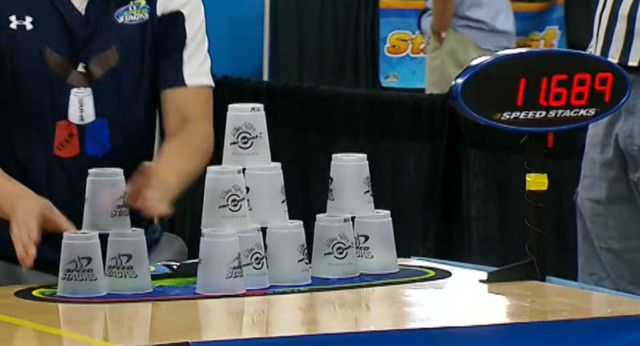A sport that started in California in the 1980s — is gaining momentum around the world, particularly in China and the U.S. To get started, all you need is a table and a handful of cups.
CGTN’s Roee Ruttenberg went to the U.S. state of Michigan to see how he “stacks-up” against some experts.
Wu Zhewei is a champion sport-stacker.
“Sport Stacking is very repetitive. But that’s a good thing, maybe, because it shows progression,” Wu explained. “If you have the perseverance, if you are willing to practice, you can become one of the best in the world.”
Wu was born in China’s Guangdong Province, but raised in the U.S. The 21-year-old student is known as one of America’s fastest stackers.
He recently showed-off on Chinese television, trying to break the world record. He didn’t, but he had no regrets.
“I wanted to showcase what Sport Stacking was like to a Chinese audience,” Wu said.
It might be working. More and more children in China are now stacking, and there are many, different forms in which to play.
Relay Stacking works a lot like a team race. Players can also compete in singles and doubles (i.e. two stackers, each using one hand).
CEO of the WSSA, or World Sport Stacking Association, Larry Goers travels around from school to school introducing stacking.
“They see the kids moving, they see them developing their ambidexterity, hand-eye coordination. And most importantly, they see kid’s self-esteem changing,” Goers explained. “They’re able to stand tall now, and look adults in the eye and shake their hands. They weren’t like that a year or two before.”
It’s not by coincidence that stacking is now part of the amateur Junior Olympics, right alongside other more traditional sports.
 CGTN America
CGTN America

